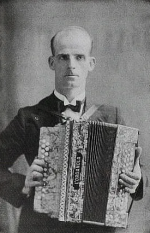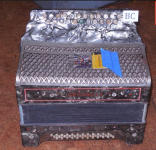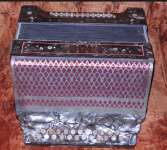Is that kind of what a Shand Morino is like?
It definitely is, in fact, technologically, and chronologically speaking, it's the forerunner of the Shand, and was top of the line for Hohner at the time.
The Shand Morino adds a third C# row, so you can in theory play any chord on the right hand. You can already (more or less, sometimes less) play in every key on a B/C, by using both rows. The C# can open more possibilities with more note reversals on the press/draw, too, but I haven't studied it enough to tell you which offhand. (This is also accomplished on other boxes with "helper" rows than give you note reversals, a bit like the gleichton, but not on the home note of the row's key.)
The Shand marries that diatonic approach with the full 80 (and eventually 120?) bass layout. Which makes it incredibly versatile, while remaining in the Celtic diatonic tradition.
I've opted for a lighter approach, a B/C with 36 basses, which gives you a bass, major chord, minor chord, chromatically, in every key. This Hohner offers four voices as well, but with far fewer combinations than the Shand, but with LMMM approaches the Irish American (one row, six, eight, voices) to a degree.
The choice for me, after experiencing a PA Morino, came down to a Shand in the UK, which a member here very (incredibly) kindly offered to facilitate, or the restoration of this box in the USA. This one is closer to what I'm playing now, and probably intend to play, but no doubt I'll end up wishing I'd somehow managed both.
So in terms of just how much the Organola B/C likely informs the future Shand Morino, here's a picture of Jimmy Shand and his Hohner organola from melodeon.net, probably 1933-34ish.
Some early Jimmy Shand documents, relating to Organola purchases + recording
forum.melodeon.net




